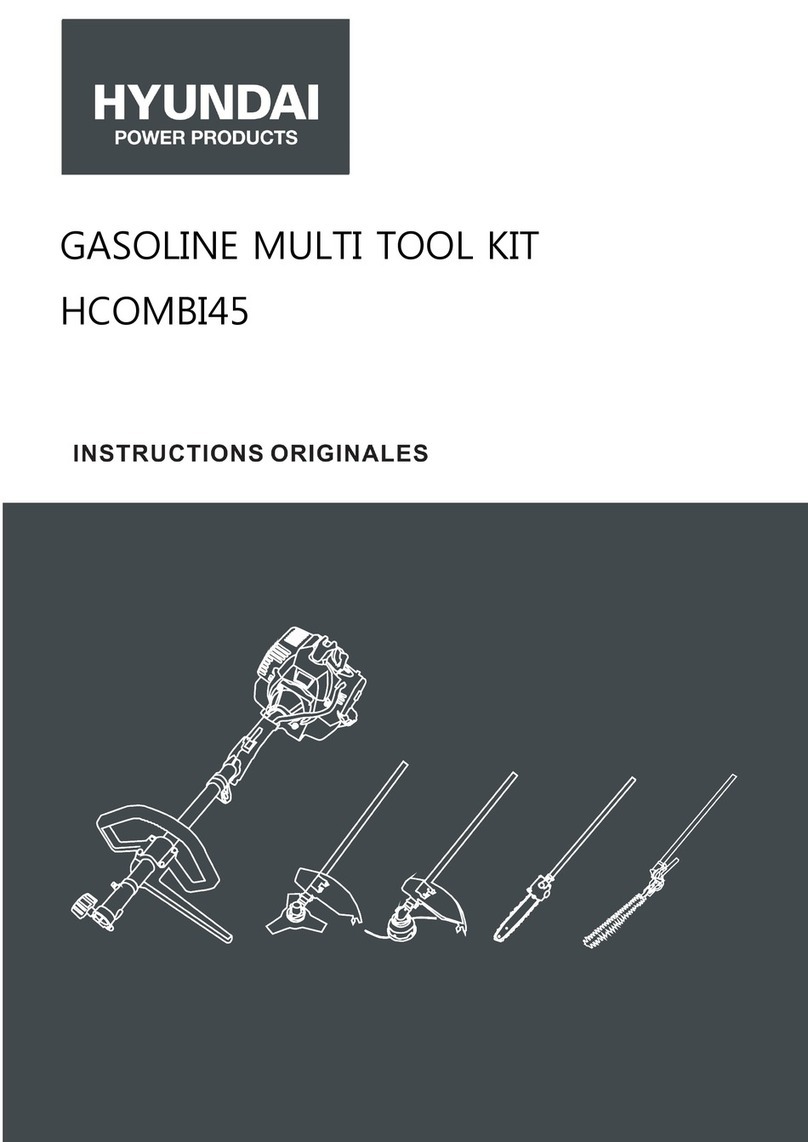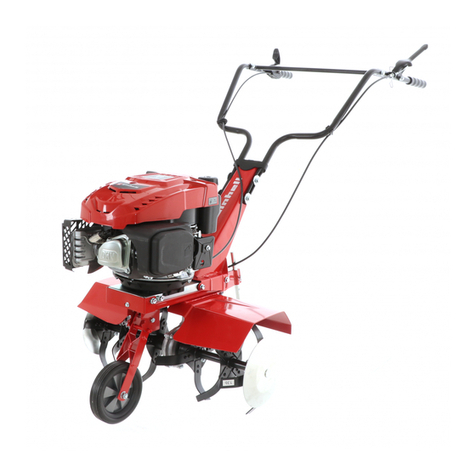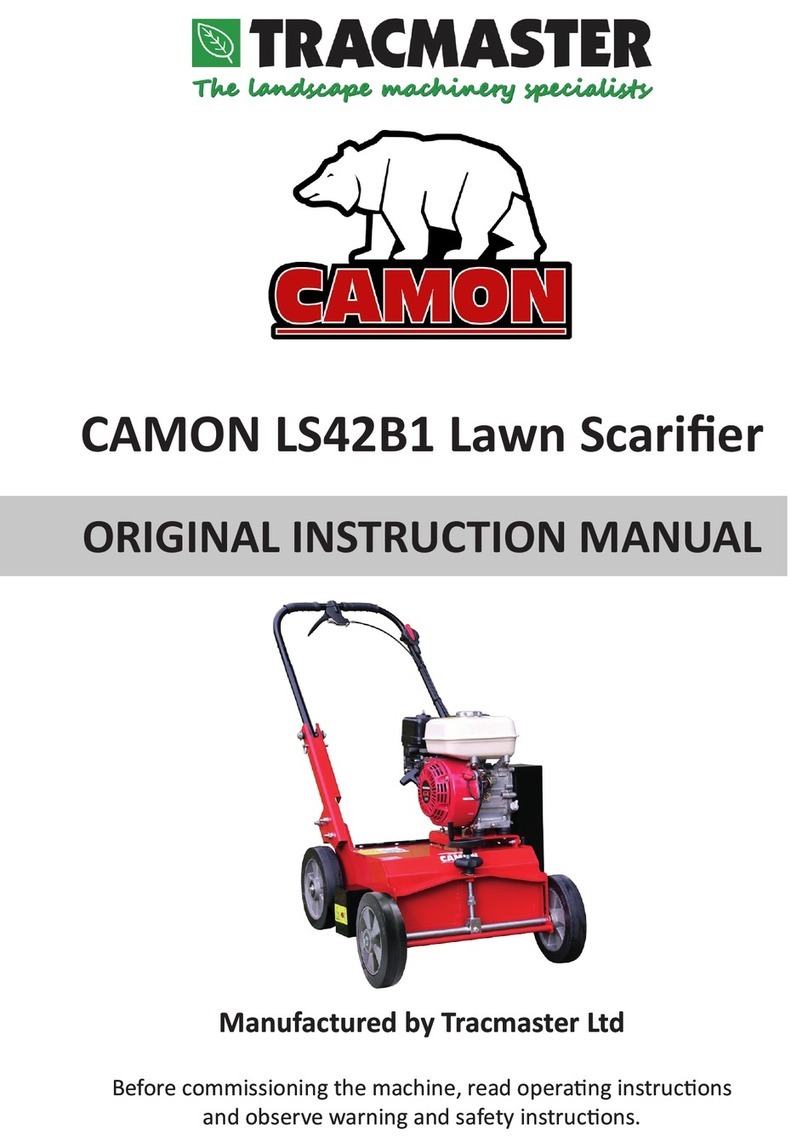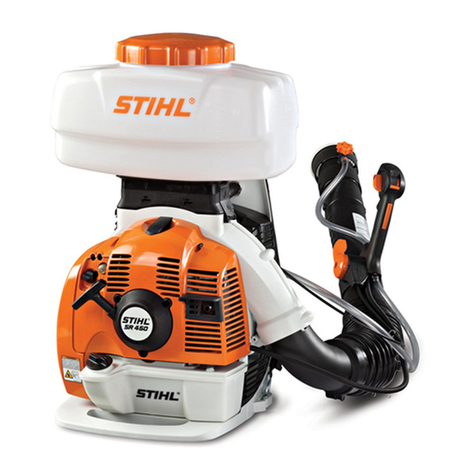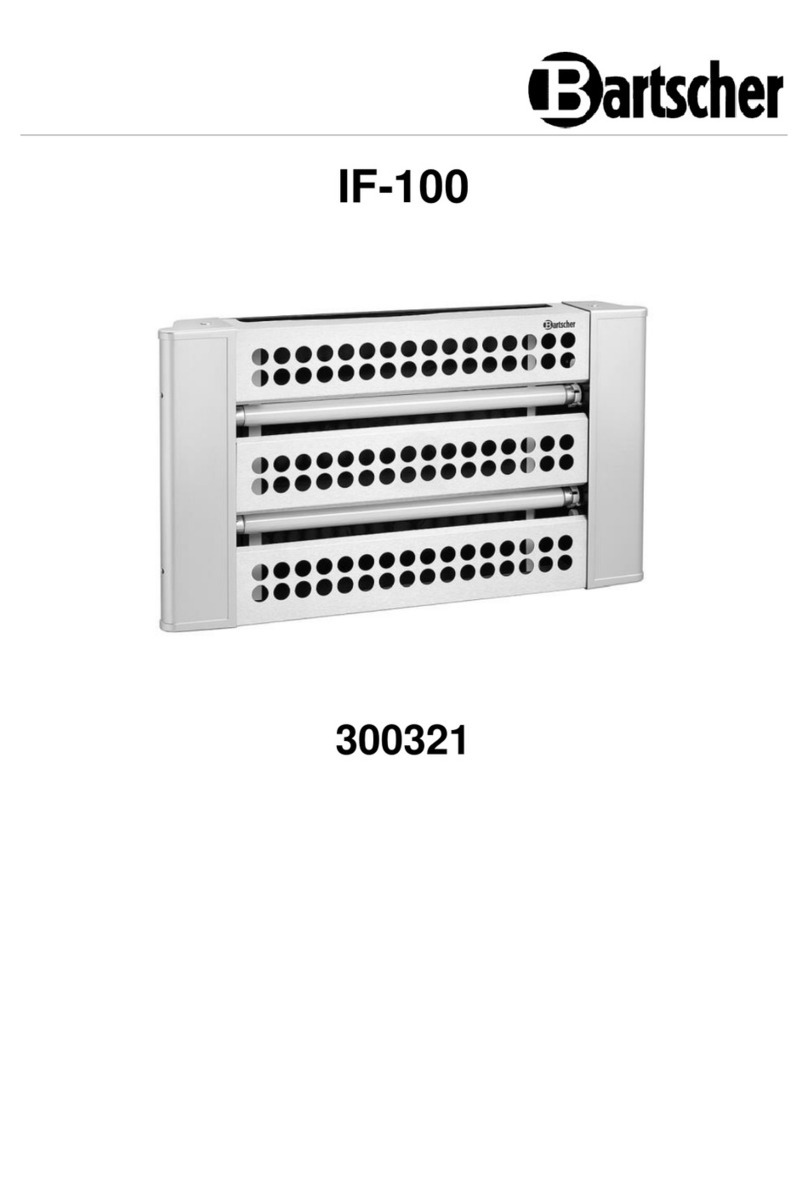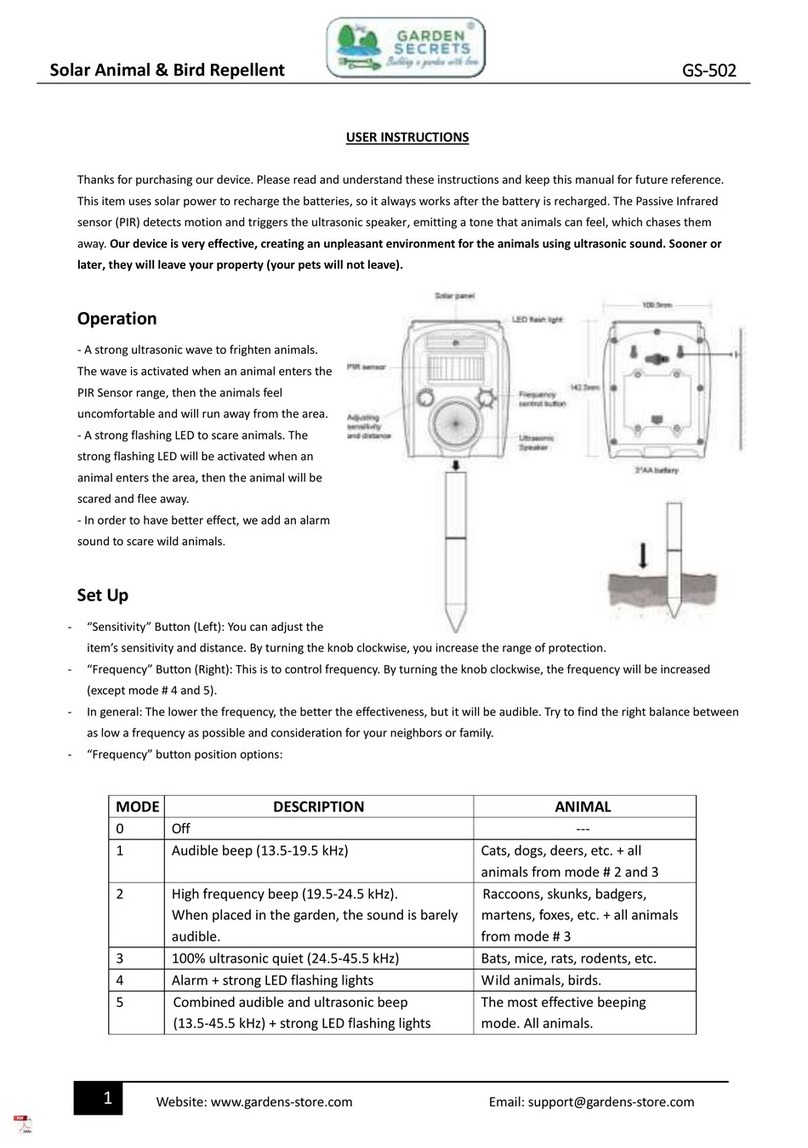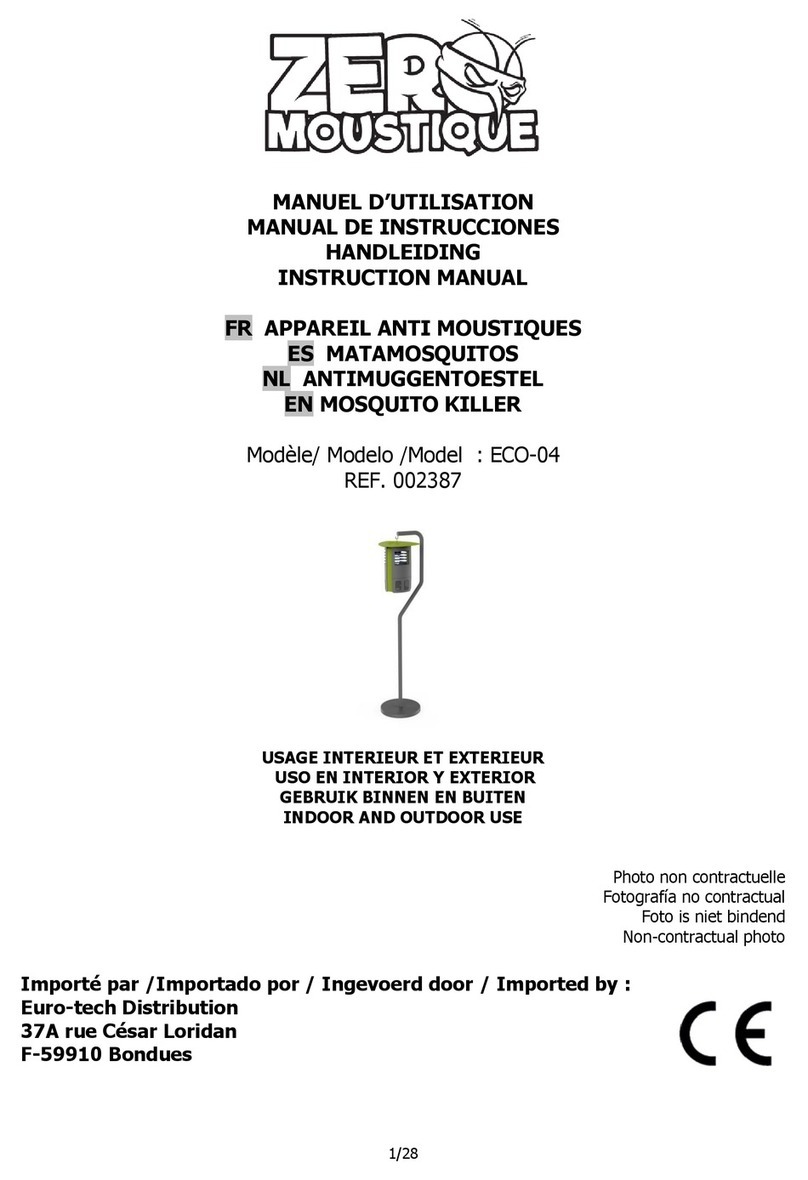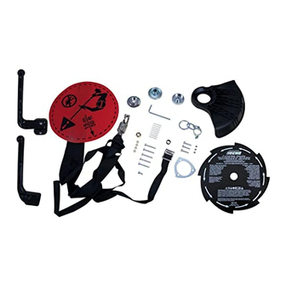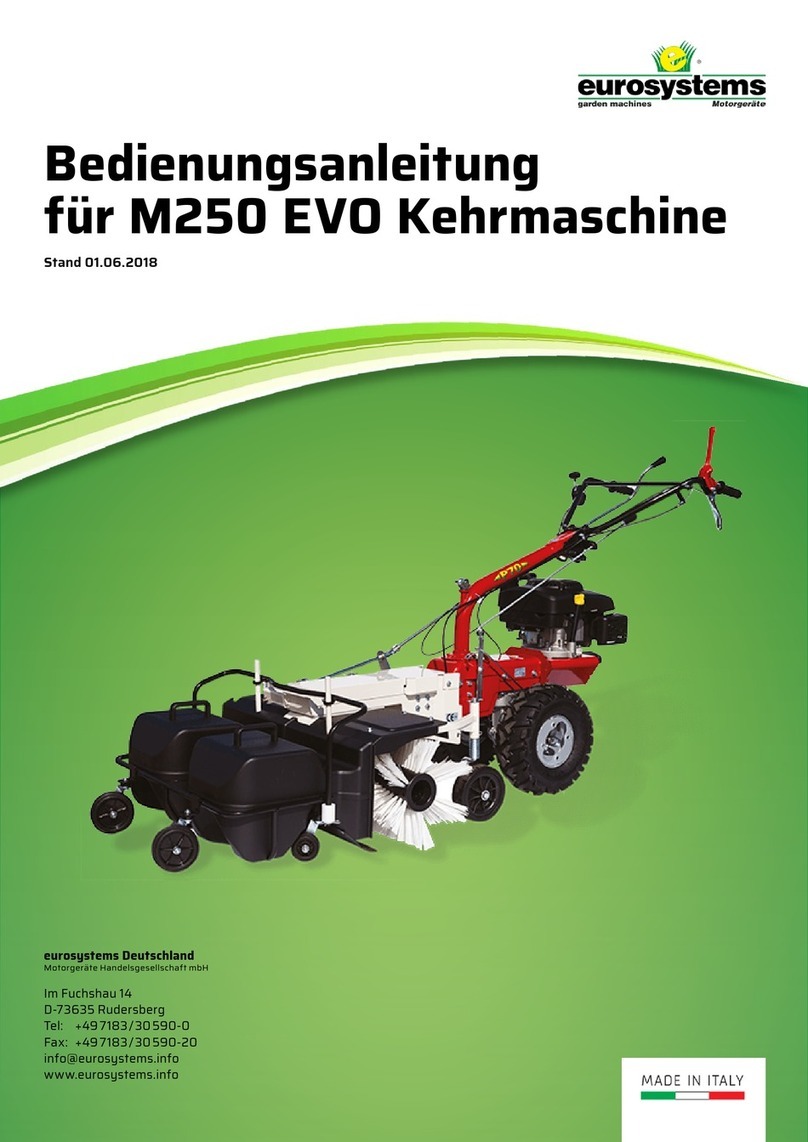Pelsis Green Protect Pot Plant Insect Trap User manual

Sterling House, Grimbald Crag Close,
Knaresborough, North Yorkshire,
HG5 8PJ UK
+44 (0)800 988 5359
EN, FR, DE, IT, PL, FI
Industrieweg 15
2880 Bornem
Belgium
+ 32 (0)3 886 22 11
BE
www.pelsis.com
Glentevej 11
DK-6705 Esbjerg
Denmark
+ 45 75 14 48 00
DK, NO, SE
Gildeweg 37b
3771 NB Barneveld
Nederland
+31 342 420435
NL, DE
Calle Juan de la Cierva
19, 03203 Elche
Alicante, Spain
+34 965 683 840
ES
The Green Protect Pot Plant Insect Trap is an eective trap, used to catch plant-feeding insects without
the use of insecticides.
Directions of use:
1. Slide metal stake onto the bottom of the trap
2. Carefully remove the cover paper from the glued trap
3. Using the metal stake, position the trap within the soil of your plant pots. Ensure it is not positioned where the trap
will make contact with the plant or pot.
Replace the trap when full or every 6 weeks.
Alternatively, the rectangular traps can be hung by threading a piece of string through the hole. It is suggested that you
thread the string prior to removing the cover paper for ease.
The trap covers an area of 10m², however, we recommend placing one trap in each pot plant for
complete coverage.
About the trap:
The Green Protect Pot Plant InsectTraps should be positioned early in the season before the insect population begins to
build up on your potted plant. The traps have been innovatively designed based on research proving that a number of
insects are attracted to specic colour wavelengths as they stimulate insect responses. The yellow tone has been found
to be especially attractive toWhitey, Aphids, Fungus Gnats and Miner Flies. Due to the high-tech non-drying adhesive,
insects are caught quickly.
About Whitey
TheWhitey has a white, wax-like, powder layer on top of its body and is around 2mm in size.They can be found on a
range of dierent plants and if you touch the plant, they will suddenly disperse. Both ies and the nymphs can be found
underneath the leaves as these small sucking insects take the nutrients from the plant and transmit disease, which results
in the plant drying out and losing its leaves.The whitey and the nymphs secrete honeydew, making the leaves of the
plant sticky which potentially covering the plant in black mould. It is possible for female whitey to lay 200-400 eggs
each season, which falls in late Spring. Whitey are notorious for building up a resistance to synthetic chemical pesticides
therefore eco-friendly solutions are often the most eective solution.
How to get rid of Whitey
When your Green Protect Pot Plant InsectTraps have detected the presence of plant-feeding insects, you may need to
implement measures to remove them.To remove whitey from your home you can use the below simple, eco-friendly
methods:
1. Use a small hand vacuum to remove pests from under the leaves
2. Remove the extremely infected branches or leaves using garden cutters
3. Wash your plant with a soap / water solution
4. Position a Green Protect Pot Plant Insect Trap in all potted plants
About Aphids
Aphids can have many dierent coloured appearances including yellow, green, black, grey and white or pink and brown.
They are around 2mm in size and can be found on plants inside and outside as they suck the sap from the leaves, causing
them to wither. Like Whitey, Aphids secrete honeydew which makes the leaves of the plant sticky and potentially covered
in black mould. Aphids are often found on new, young plants where there are new leaves or owers growing as they
contain the most nutrients. Due to disease transmission, Aphids can cause serious damage as they make the plant’s leaves
turn yellow and curl whilst growth is stunted.
How to get rid of Aphids
When your Green Protect Pot Plant InsectTraps have detected the presence of plant-feeding insects, you may need to
implement measures to remove them.To remove Aphids from your home you can use the below simple, eco-friendly
methods:
1. Wearing gloves, remove the Aphids by hand and dispatch between your ngers
2. Using a garden hose, spray the infected plants with water. Please avoid using a pressure that is high
enough to cause damage to the plant
3. Cut the plant back to reduce the chance of large colonies growing
4. Spray the plant with a soap / water solution
5. Position a Green Protect Pot Plant Insect Trap in all potted plants
About Fungus Gnats
Fungus Gnats are small dark coloured ies, around 3mm in size that are often found in indoor plants, particularly where
humidity is high. The larvae of this pest causes damage to houseplants as they feed from the soil which damages the
plant’s roots resulting in the plant turning yellow and stunting growth. Although the adults live for only 1 week on
average, they lay up to 300 eggs which take 4-6 days for the larvae to emerge.
How to get rid of Fungus Gnats
When your Green Protect Pot Plant InsectTraps have detected the presence of plant-feeding insects, you may need to
implement measures to remove them.To remove Fungus Gnats from your home you can use the below simple, eco-friendly
methods:
1. Keep soil dry by not over watering as the pest thrives in damp conditions
2. Add sand to help keep the soil dry and reduce larvae growth
3. Position a Green Protect Fruit FlyTrap near infected plants
4. Position a Green Protect Pot Plant Insect Trap in all potted plants
Contains: 10 traps. Active: 6 weeks. For more advice, please contact us.
Die Insektenfalle Green Protect Pot Plant ist eine eektive Falle, die verwendet wird, um Panzenzüchtungen ohne
Insektizide zu fangen.
Gebrauchsanweisung:
1. Metallschaufeln auf den Boden der Falle gleiten
2. Das Deckpapier vorsichtig aus der geklebten Falle entfernen
3. Mit dem Metalleinsatz positionieren Sie die Falle im Boden Ihrer Panzentöpfe. Stellen Sie sicher, dass es nicht
dort positioniert ist, wo die Falle Kontakt mit der Panze oder dem Topf aufnehmen wird.
Ersetzen Sie die Falle, wenn sie voll oder alle 6Wochen ist.
Alternativ können die rechteckigen Fallen aufgehängt werden, indem ein Stück durch das Loch gezogen wird. Es wird
empfohlen, dass Sie zum Abnehmen des Deckpapiers einfädeln.
Die Falle hat eine Fläche von 10 m², es wird jedoch empfohlen, in jeder Topfanlage.
Über die Falle:
Die Green Protect-Topfpanzen-Insektenfallen sollten zu Beginn der Saison aufgestellt werden, bevor sich die
Insektenpopulation auf IhrerTopfpanze aufbaut. Die Fallen wurden auf der Grundlage von Forschungsergebnissen
innovativ gestaltet, die belegen, dass eine Anzahl von Insekten von bestimmten Farbwellenlängen angezogen wird,
da sie die Reaktion von Insekten stimulieren. Der Gelbton ist besonders fürWhitey, Blattläuse, Pilzmücken und
Bergmannsiegen attraktiv. Durch den nicht-trocknenden High-Tech-Klebsto werden Insekten schnell gefangen.
Über die weisse Fliege:
Die Whitey hat eine weiße, wachsartige Pulverschicht auf ihrem Körper und ist etwa 2 mm groß. Sie können auf
verschiedenen Panzen gefunden werden und wenn Sie die Panze berühren, zerstreuen sie sich plötzlich. Sowohl
Fliegen als auch Nymphen sind unter den Blättern zu nden, da diese kleinen saugenden Insekten die Nährstoe aus der
Panze entnehmen und Krankheiten übertragen, wodurch die Panze austrocknet und ihre Blätter verliert. DieWeiße
Fliege und die Nymphen scheiden den Honigtau aus, wodurch die Blätter der Panze klebrig werden, wodurch die Panze
möglicherweise mit schwarzem Schimmel bedeckt wird. Es ist möglich, dass die weibliche Weiße Fliege 200-400 Eier pro
Saison legt, was im späten Frühling fällt.
Whitey ist bekannt dafür, Resistenzen gegen synthetische chemische Pestizide aufzubauen. Daher sind
umweltfreundliche Lösungen oft die eektivste Lösung.
Wie kann ich die weisse Fliege loswerden?
Wenn Ihre Insektenfallen der Green Protect-Topfpanze dasVorhandensein panzenfressender Insekten erkannt haben,
müssen Sie möglicherweise Maßnahmen ergreifen, um diese zu entfernen. Um dieWeiße Fliege von zu Hause aus zu
entfernen, können Sie die folgenden einfachen, umweltfreundlichen Methoden verwenden:
1. Entfernen Sie mit einem Handstaubsauger Schädlinge unter den Blättern
2. Entfernen Sie die stark befallenen Äste oder Blätter mit Gartenschneidern
3. Waschen Sie Ihre Panze mit einer Seifenlösung
4. Platzieren Sie in allenTopfpanzen eine Green Protect Topfpanzenfalle.
Über die Pilzmücken
Pilzmücken sind kleine, dunkelfarbige Fliegen, die in der Größe von ca. 3mm häug in Zimmerpanzen zu nden sind, vor
allem wenn die Luftfeuchtigkeit hoch ist. Die Larven dieser Schädlinge verursachen Schäden an den Zimmerpanzen, da
sie sich vom Boden ernähren, was dieWurzeln der Panze schädigt, was dazu führt, dass die Panze gelb wird. Obwohl die
Erwachsenen im Schnitt nur eine Woche leben, legen sie bis zu 300 Eier, die 4-6Tage brauchen, bis die Larven entstehen.
Wie man Pilzmücken loswird
Wenn Ihre Green Protect Topfpanzen Insektenfallen dasVorhandensein von Panzenzinsekten festgestellt haben, müssen
Sie möglicherweise Maßnahmen ergreifen, um sie zu entfernen. Um Pilzmücken von zu Hause zu entfernen, können Sie
die folgenden einfachen, umweltfreundlichen Methoden anwenden:
1. Boden trocken halten, indem man nicht übergießt, da der Schädling unter feuchten Bedingungen gedeiht
2. Fügen Sie Sand hinzu, um den Boden trocken zu halten und das Larvenwachstum zu reduzieren
3. Position einer grünen Schutzfrucht-Klebe-Falle in der Nähe inzierter Panzen
4. Position einer grünen Schutztopfpanzenintenfalle in allenTopfpanzen
Über Blattläuse:
Blattläuse können viele verschiedene farbige Erscheinungen haben, einschließlich gelb, grün, schwarz, grau und weiß oder
rosa und braun. Sie sind etwa 2 mm groß und können an Panzen drinnen und draußen gefunden werden, wenn sie den
Saft aus den Blättern saugen und verdorren. Wie die weisse Fliege scheiden Blattläuse Honigtau aus, wodurch die Blätter
der Panze klebrig werden und möglicherweise mit schwarzem Schimmel bedeckt sind. Blattläuse werden häug bei
neuen, jungen Panzen gefunden, bei denen neue Blätter oder Blüten wachsen, da sie die meisten Nährstoe enthalten.
Aufgrund der Übertragung von Krankheiten können Blattläuse ernsthafte Schäden verursachen, da die Blätter der Panze
gelb werden und sich kräuseln, während dasWachstum behindert wird.
Wie Sie Blattläuse loswerden
Wenn Ihre Insektenfallen der Green Protect-Topfpanze dasVorhandensein panzenfressender Insekten erkannt haben,
müssen Sie möglicherweise Maßnahmen ergreifen, um diese zu entfernen. Um die Blattläuse von zu Hause zu entfernen,
können Sie die folgenden einfachen, umweltfreundlichen Methoden verwenden:
1. Mit Handschuhen die Blattläuse von Hand entfernen und zwischen die Finger schieben
2. Besprühen Sie die inzierten Panzen mit einem Gartenschlauch mitWasser.Vermeiden Sie es, einen Druck zu
verwenden, der hoch genug ist, um die Anlage zu beschädigen
3. Schneiden Sie die Panze zurück, um die Wahrscheinlichkeit zu verringern, dass große Kolonien wachsen
4. Besprühen Sie die Panze mit einer Seifenlösung
5. Platzieren Sie in allenTopfpanzen eine Green Protect Pot Plant-Insektenfalle
Enthält: 10 Fallen. Aktiv: 6 Wochen. Für weitere Beratung kontaktieren Sie uns bitte.
EN- DE-
1. 2. 3. 1. 2. 3.

Sterling House, Grimbald Crag Close,
Knaresborough, North Yorkshire,
HG5 8PJ UK
+44 (0)800 988 5359
EN, FR, DE, IT, PL, FI
Industrieweg 15
2880 Bornem
Belgium
+ 32 (0)3 886 22 11
BE
www.pelsis.com
Glentevej 11
DK-6705 Esbjerg
Denmark
+ 45 75 14 48 00
DK, NO, SE
Gildeweg 37b
3771 NB Barneveld
Nederland
+31 342 420435
NL, DE
Calle Juan de la Cierva
19, 03203 Elche
Alicante, Spain
+34 965 683 840
ES
Pułapka przeciw insektom Green Protect do Kwiatków to skuteczny sposób stosowany do chwytania owadów
żywiących się roślinami bez użycia insektycydów.
Wskazówki dotyczące użytkowania:
1. Wsunąć metalowy kołek na lep
2. Ostrożnie zdejmij papier zakrywający z lepu
3. Za pomocą metalowego kołka ustaw pułapkę w ziemi w doniczce. Upewnij się, że nie jest ustawiony w miejscu, w
którym pułapka będzie stykać się z rośliną lub doniczką.
Wymień pułapkę gdy pełna lub co 6 tygodni.
Ewentualnie, prostokątne ślady można zawiesić, przewlekając kawałek sznurka przez otwór. Zaleca się nawleczenie
sznurka przed usunięciem papieru osłaniającego lep.
Pułapka ma powierzchnię 10m², jednak zalecamy umieszczenie jednej pułapki w każdej roślinie doniczkowej, aby
zapewnić całkowite osłonę.
O pułapce:
Pułapki na owady powinny być umieszczone na początku sezonu, zanim populacja owadów zacznie gromadzić się na
roślinie doniczkowej. Pułapki zostały innowacyjnie zaprojektowane w oparciu o badania dowodzące, że są niektóre owady
reagują na określone długości fal świtła, ponieważ stymulują reakcje owadów. Stwierdzono, że żółty kolor jest szczególnie
atrakcyjny dla mączlika, mszyc, ziemirókowatych i i innych muchowych. Ze względu na zaawansowany technologicznie
nieschnący klej, owady szybko łapią się.
O mączliku szklarniowym
Mączlik ma na wierzchu białą, woskową warstwę proszku i ma około 2 mm. Można je znaleźć w wielu różnych roślinach, a
jeśli dotkniesz rośliny, nagle się rozproszą. Zarówno muchy, jak i nimfy można znaleźć pod liśćmi, ponieważ te małe owady
ssące pobierają składniki odżywcze z rośliny i przenoszą chorobę, co powoduje wysychanie rośliny i utratę jej liści. Mączlika
i nimfy wydzielają spadź, przez co liście rośliny są lepkie i dlatego często pokrywa roślinę czarn pleśń. Jest możliwe, że
samica składa 200-400 jaj w każdym sezonie, który wypada późną wiosną.
Biała muszka jest znana z budowania odporności na syntetyczne chemiczne pestycydy, dlatego ekologiczne rozwiązania są
często najskuteczniejszym rozwiązaniem.
Jak się ich pozbyć
Gdy twoje pułapki Green Protect wykryją obecność owadów żywiących się roślinami, być może trzeba będzie zastosować
środki, aby je usunąć. Aby usunąć z domu, możesz skorzystać z poniższych prostych, przyjaznych dla środowiska metod:
1. Użyj rękawiczek, aby usunąć szkodniki spod liści
2. Usuń bardzo zainfekowane gałęzie lub liście za pomocą nożyc ogrodowych
3. Umyj swoją roślinę roztworem mydła / wody
4. Ustawić pułapki we wszystkich roślinach doniczkowych
O mszycach
Mszyce mogą występować w różnych kolorach, w tym żółty, zielony, czarny, szary i biały lub różowy i brązowy. Mają
rozmiar około 2 mm i można je znaleźć na roślinach wewnątrz i na zewnątrz, ponieważ wysysają sok z liści, powodując
ich usychanie. Podobnie jak mszyce wydzielają spadź, co sprawia, że liście rośliny są lepkie i potencjalnie pokryte czarną
pleśnią. Mszyce są często spotykane na nowych, młodych roślinach, gdzie pojawiają się nowe liście lub kwiaty, ponieważ
zawierają najwięcej składników odżywczych. Ze względu na przenoszenie choroby mogą wywołać poważne uszkodzenia
roślinom.
Jak się ich pozbyć
Gdy twoje pułapki Green Protect wykryją obecność owadów żywiących się roślinami, być może trzeba będzie zastosować
środki, aby je usunąć. Aby usunąć z domu, możesz skorzystać z poniższych prostych, przyjaznych dla środowiska metod:
1. Utrzymuj suchą glebę gdyż wilgoć sprzyja temu szkodnikowi
2. Dodaj piasku do ziemi
3. Ustaw pułapkę na Meszki blisko roślin dokniętych mszycą
4. Ustaw Green Protect Pułapki do Kwiatków we wszystkich roślinach doniczkowych
O ziemirókowatych
Ziemiórkowate to małe, ciemne muchy o wielkości około 3 mm.Występują w roślinach doniczkowych, szczególnie tam,
gdzie wilgotność jest wysoka. Larwy tego szkodnika powodują uszkodzenia roślin , ponieważ żywią się one glebą, która
uszkadza korzenie co powoduje, że roślina zmienia kolor na żółty i zahamowuje wzrost. Chociaż dorosłe osobniki żyją
przeciętnie tylko przez 1 tydzień, składają do 300 jaj, które potrzebują 4-6 dni na pojawienie się larw.
Jak pozbyć się ziemiórkowatych
Gdy twoje pułapki Green Protect wykryją obecność owadów żywiących się roślinami, być może trzeba będzie zastosować
środki, aby je usunąć. Aby usunąć je z domu, możesz skorzystać z poniższych prostych, ekologicznych metod:
1. Utrzymuj glebę w suchym stanie
2. Dodaj piasek, aby utrzymać suchą glebę
3. Umieścić pułapkę na meszki Green Protect w pobliżu zainfekowanych roślin
4. Ustaw Green Protect Pułapki do Kwiatków we wszystkich roślinach doniczkowych
Zawiera: 10 lepów. Aktywna: 6 tygodni. Aby uzyskać więcej porad, skontaktuj się z nami.
PL-
1. 2. 3.
Popular Lawn And Garden Equipment manuals by other brands
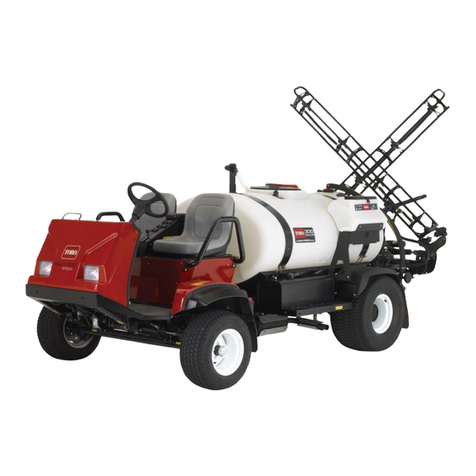
Toro
Toro Multi Pro 5700-D Service manual
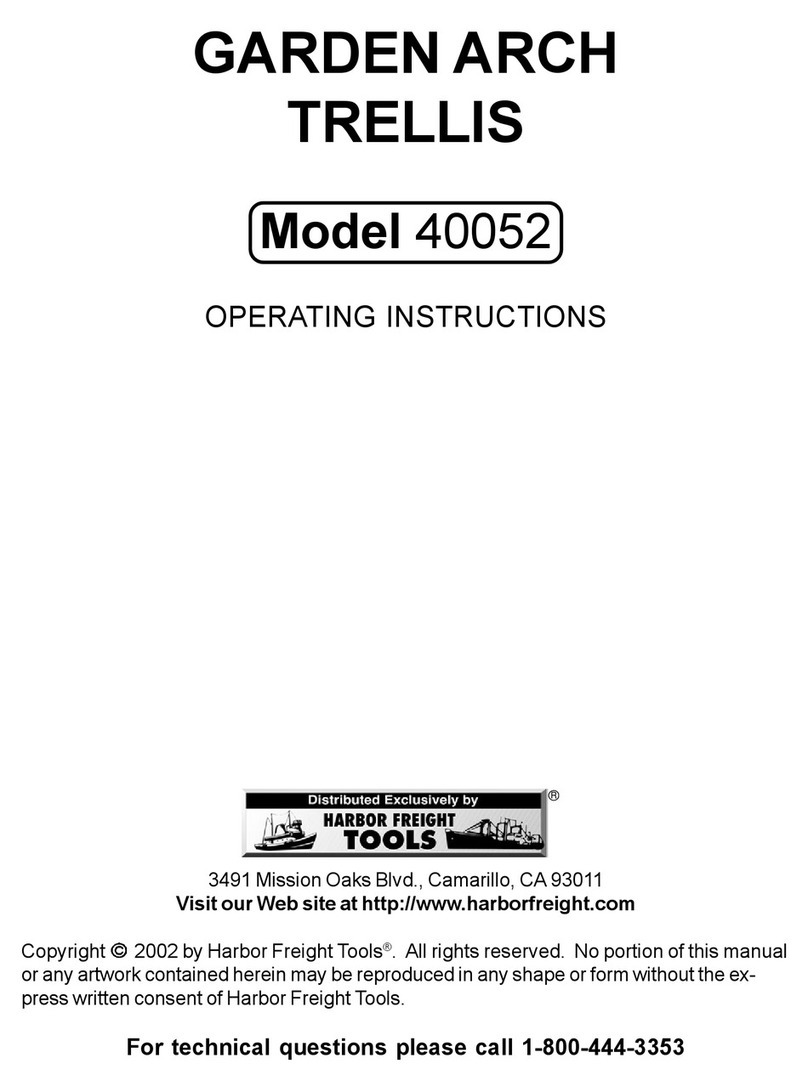
Harbor Freight Tools
Harbor Freight Tools 40052 operating instructions
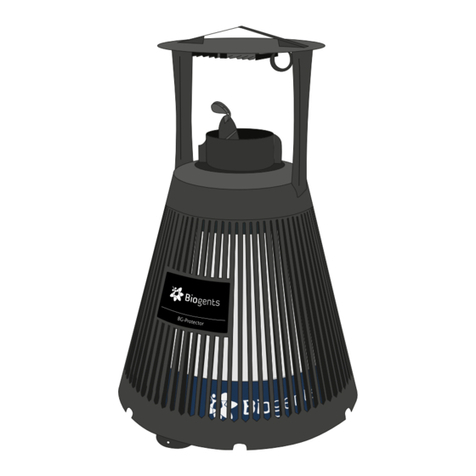
Biogents
Biogents BG instruction manual

Greenwood
Greenwood 94661 Owner's manual & safety instructions
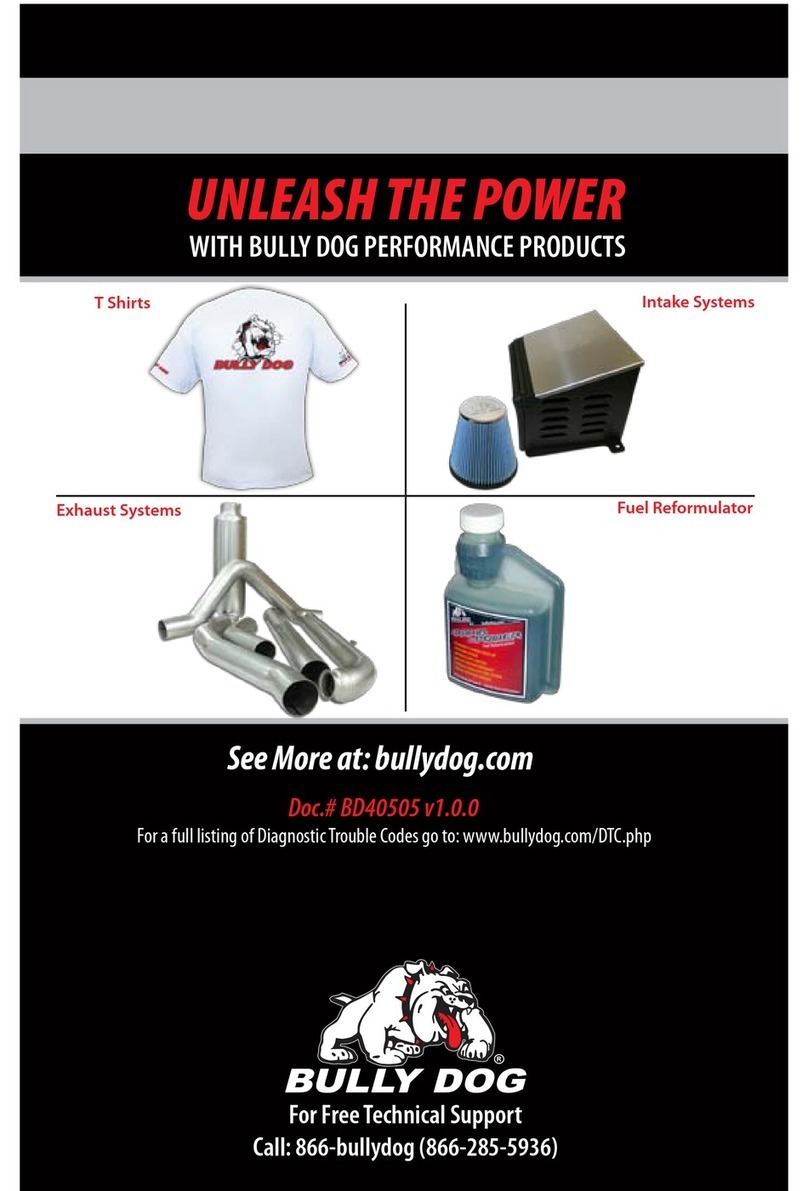
Bully Dog
Bully Dog 40505 installation manual
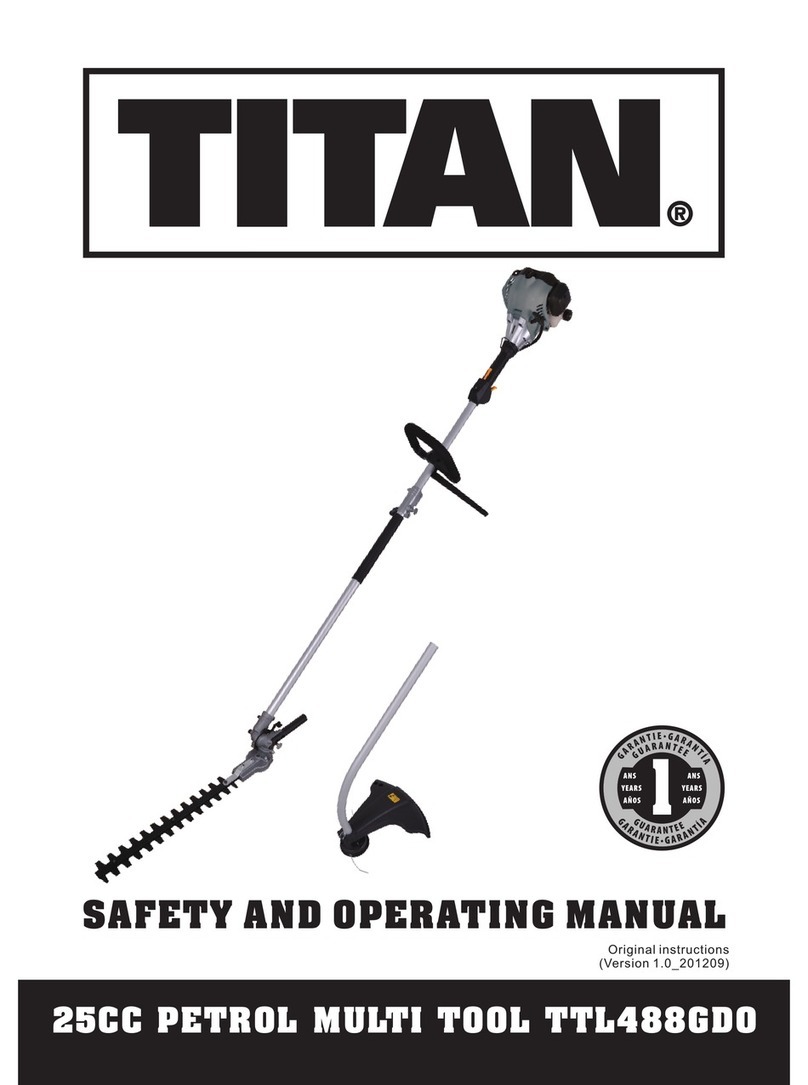
Titan
Titan TTL488GDO Safety and operating manual

